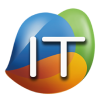IT Managed Services vs. Traditional IT Support: What’s Best for Your Business?
In today’s fast-paced digital landscape, businesses need IT systems that are reliable, efficient, and scalable. Both IT managed services and traditional IT support offer solutions, but they approach the challenges of business technology in very different ways. Understanding the differences between these two models can help you decide which approach best suits your business needs.
Here, we’ll explore the key differences between IT managed services and traditional IT support, so you can make an informed decision.
What is Traditional IT Support?
Traditional IT support, also known as break/fix support, is a reactive approach to IT issues. When something breaks, the IT support team is called in to fix the issue. This model has been around for decades and is still widely used by businesses.
Characteristics of Traditional IT Support:
- Reactive support: You only call IT support when something goes wrong. There’s no consistent monitoring or proactive approach to preventing issues.
- Billing by the hour or service: In the break/fix model, you pay for IT support on an as-needed basis. This could be an hourly rate or a flat fee for a specific service.
- On-site or remote service: Depending on the complexity of the problem, a technician may either come to your location or try to solve the issue remotely.
Advantages of Traditional IT Support:
- Cost control: You only pay when there’s an issue, so there’s no ongoing cost if everything is working properly.
- On-demand expertise: When you face a problem, you get expert help immediately, often with specialized knowledge that your in-house team might not have.
Disadvantages of Traditional IT Support:
- Downtime costs: Because traditional IT support is reactive, you have to wait for something to break before getting help. The time it takes to fix the issue can result in significant downtime, lost productivity, and revenue.
- Unpredictable expenses: Since there’s no regular service contract, IT costs can vary widely. If your system encounters multiple issues in a short period, expenses can skyrocket.
- Lack of preventive measures: Traditional IT support lacks a preventive approach, which means businesses are at a higher risk of experiencing recurring problems.
What are IT Managed Services?
IT managed services offer a proactive approach to IT management. In this model, an IT services provider, often referred to as a Managed Service Provider (MSP), takes full responsibility for your IT systems. The MSP continuously monitors your systems, provides ongoing maintenance, and addresses potential issues before they escalate.
Characteristics of IT Managed Services:
- Proactive monitoring: MSPs use advanced monitoring tools to continuously check your systems for issues. They often resolve potential problems before they cause downtime.
- Flat-rate pricing: Managed services usually come with a predictable monthly fee, making budgeting easier. This fee covers a range of services like monitoring, security, updates, and technical support.
- Comprehensive services: Managed services cover a wide array of IT needs, including cybersecurity, cloud services, data backup, and disaster recovery.
Advantages of IT Managed Services:
- Reduced downtime: By identifying and fixing issues before they become major problems, MSPs can significantly reduce downtime. This proactive approach helps keep your business running smoothly.
- Predictable costs: With a flat-rate pricing model, IT managed services make budgeting for IT costs straightforward. You won’t face unexpected repair bills or emergency service fees.
- Scalability: As your business grows, your IT needs evolve. Managed services allow for easy scalability, ensuring that your IT infrastructure grows with your company.
- Cybersecurity: MSPs often include cybersecurity services as part of their offering, ensuring that your business is protected from the latest threats.
Disadvantages of IT Managed Services:
- Ongoing cost: Unlike traditional IT support, where you only pay when something goes wrong, managed services require a continuous investment. However, many businesses find that the predictability and proactive approach make this investment worthwhile.
Key Differences Between IT Managed Services and Traditional IT Support
Understanding the key differences between IT managed services and traditional IT support can help you determine which model is best suited for your business.
1. Proactive vs. Reactive
- Traditional IT Support: Reactive, addressing problems only after they occur.
- IT Managed Services: Proactive, monitoring your system 24/7 and preventing issues before they arise.
2. Cost Structure
- Traditional IT Support: You pay per incident, which can lead to fluctuating IT expenses. While the upfront costs might seem lower, unexpected problems can quickly add up.
- IT Managed Services: You pay a fixed monthly fee, allowing for predictable budgeting. The upfront costs might seem higher, but you avoid sudden, unpredictable expenses.
3. Response Time
- Traditional IT Support: Response times can vary depending on the availability of technicians. This can result in prolonged downtime and lost productivity.
- IT Managed Services: With constant monitoring, MSPs can often resolve issues before they affect your business. When problems do arise, the MSP is typically able to respond quickly, minimizing downtime.
4. Support Scope
- Traditional IT Support: You receive support for specific problems but may not have access to a full range of services, like cybersecurity, disaster recovery, or cloud management.
- IT Managed Services: MSPs provide comprehensive support, from network monitoring to security, cloud services, and disaster recovery planning.
5. Scalability
- Traditional IT Support: Limited scalability. As your business grows, your IT needs may outpace the capabilities of traditional support, requiring you to seek additional services.
- IT Managed Services: Highly scalable. As your business expands, the MSP can scale your IT infrastructure and services to match your growing needs.
How to Decide Which Model is Right for Your Business?
Now that we’ve explored the differences between traditional IT support and IT managed services, how do you decide which is the right choice for your business?
Consider Traditional IT Support If:
- Your business is small and has minimal IT needs.
- You prefer paying only when there’s an issue rather than committing to a monthly fee.
- You have in-house IT staff to handle day-to-day needs and only need outside help for more complex issues.
Consider IT Managed Services If:
- You rely heavily on your IT infrastructure and can’t afford downtime.
- You want predictable, flat-rate pricing for your IT support.
- Your business is growing, and you need a scalable IT solution that can evolve with you.
- Cybersecurity is a major concern for your business.
Both IT managed services and traditional IT support offer unique benefits. Traditional IT support may be more suited to businesses with minimal IT needs, while IT managed services provide a comprehensive and proactive solution that is ideal for businesses looking for long-term stability, scalability, and security.
To learn more about how TrueITpros can help your company with IT managed services vs. traditional IT support, contact us at www.trueitpros.com/contact.



